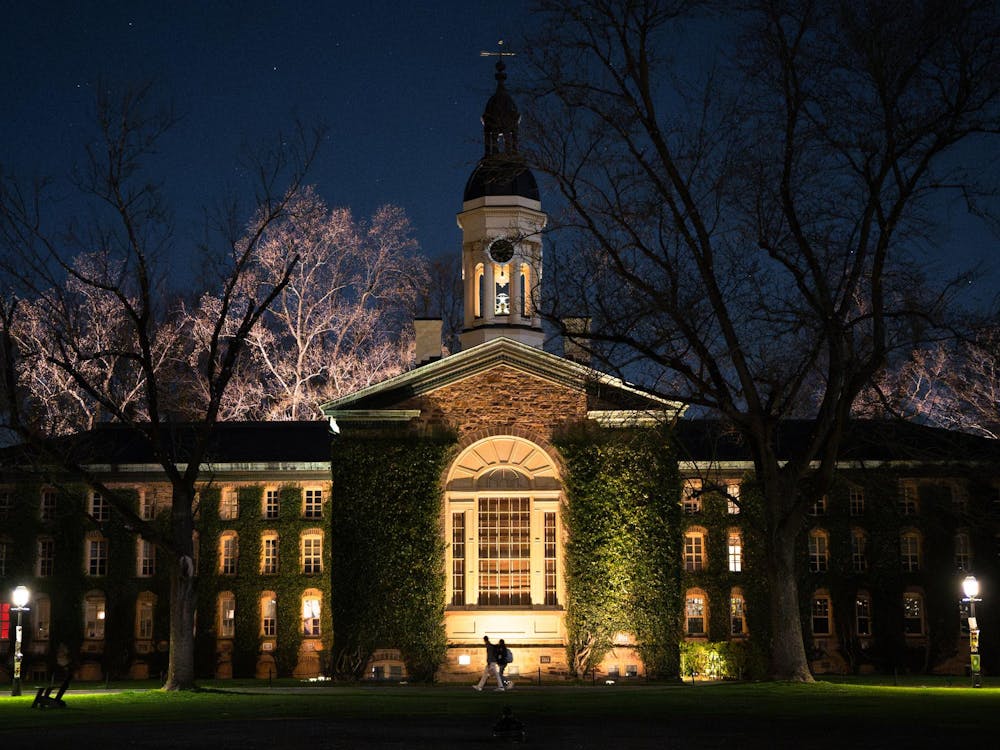The Frist Campus Center undoubtedly bettered Princeton by creating a campus heart: It provides study, dining and entertainment spaces for faculty, students and community members, and it has even changed walking patterns and pedestrian destinations, as we flock there for mail or on our return from a Saturday night out. Programmatically there is little more students could ask for, and I commend the members of the campus center administration for a job superbly done. As great as it is, however, the challenges that accompany such a wonderful place have not ended: We now must ensure that Frist does not become too institutionalized, too "finished" to accommodate changes in campus services and student requests.
There remain many University programs and organizations that could (and should) be included in our "campus center," so we should never view Frist as a completed project. Rather, the center should be understood as a work in progress, a building that will change with the times. I have little doubt that Princeton would be better served if, for example, the Outdoor Action offices were more appropriately located in Frist rather than miles (literally) away in the Helm Building. But where can we put all of these programs that are essential to campus life?
One option is to rededicate Frist spaces that are currently used as classrooms. I am aware that there is a huge classroom shortage on campus right now, and this is likely to be exacerbated by the arrival of 500 new students. As the University continues its building campaign, it should be constructing new classroom spaces, not just academic offices or libraries. We should build more than enough classrooms in order to free up some of the current space in Frist for organizations that require convenient, high-traffic locations.
The current physical space should not constrain programmatic demands. If Frist needs a 10,000 square foot addition, then so be it. It is a very inefficient use of square footage to devote to classrooms such a large portion of our "campus center." Judging by the number of organizations left out of Frist, there are unquestionably space constraints in the building. We need to ensure that each room is used in a utility-maximizing manner. Having OA or the Third World Center - organizations vital to campus life - on the campus fringes while classrooms line the hallways of our "campus center" is not an efficient allocation of space. While the resources of OA or the TWC would be better utilized if they were located in Frist, there is nothing about the campus center that makes it, rather than new, more modern facilities that can be built elsewhere, more appropriate for classrooms.
We also should not understand the décor of Frist as inflexible and static; it should evolve as the student culture and environment change over time. Students and other members of the campus community should make our center's areas what we want them to be, to welcome visitors to Princeton as we interpret it. It would not be unreasonable to permit members of the campus community to paint whatever they wanted - assuming they used appropriate language and imagery - on the walls near the mailboxes and the mini U-Store. As soon as someone else thought it was time to change the look, then he or she could paint over it. At least then we would be creating an environment reflective of the current, dynamic spirit of campus, not constrained by ugly and dreary depictions of orange and black lilies. Perhaps a first, more conservative step toward making Frist representative of the people who use it might be to remove that terrible, neon red "Café Vivian" sign that is seemingly enjoyed only by Quipfire comedians.
I am probably not alone in suggesting that the completion of the Frist Campus Center has bettered my Princeton experience as much as, if not more than, any other project completed during the past three years. As the community becomes increasingly comfortable with it, however, we must perceive the center as a place we can change, a place we can augment and most importantly, a place we can enhance. Kudos to the administration for beginning the Frist evolution by financing it; now it's up to the rest of the community to ensure that Frist remains a campus hub, a heart for a distinct, developing body. Ryan Salvatore is a Wilson School major from Stamford, CT. He can be reached at salvatre@princeton.edu.







